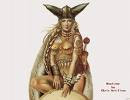Is the Glass half em
Is the Glass half empty or half full? The optimist says the glass is half full. The pessimist says the glass is half empty. The project manager/engineer says the glass is twice as big as it needs to be. The realist says the glass contains half the required amount of liquid for it to overflow. And the cynic... wonders who drank the other half. The school teacher says it's not about whether the glass is half empty or half full, it's whether there is something in the glass at all. Anyway... Attitude is not about whether the glass is half full or half empty, it's about who is paying for the next round. The professional trainer does not care if the glass is half full or half empty, he just knows that starting the discussion will give him ten minutes to figure out why his powerpoint presentation is not working. The ground-down mother of a persistently demanding five-year-old says sweetheart it's whatever you want it to be, just please let mummy have five minutes peace and quiet. The consultant says let's examine the question, prepare a strategy for an answer, and all for a daily rate of... The inquisitive troublemaker wants to know what's in the glass anyhow... and wants the rest of it. The homebuilder sees the dirty glass, washes and dries it, then puts it away in a custom oak and etched glass cabinet that he built himself using only hand tools. The worrier frets that the remaining half will evaporate by next morning. The fanatic thinks the glass is completely full, even though it isn't. The entrepreneur sees the glass as undervalued by half its potential. The computer specialist says that next year the glass capacity will double, be half the price, but cost you 50% more for me to give you the answer. The engineer says (when the half is tainted) he's glad he put the other half in a redundant glass. (Based on a Dilbert cartoon by Scott Adams) The computer programmer says the glass is full-empty. The Buddhist says don't worry, remember the glass is already broken. The logician says that where the glass is in process of being filled then it is half full; where it is in the process of being emptied then it is half empty; and where its status in terms of being filled or emptied is unknown then the glass is one in which a boundary between liquid and gas lies exactly midway between the inside bottom and the upper rim, assuming that the glass has parallel sides and rests on a level surface, and where it does not then the liquid/gas boundary lies exactly midway between the upper and lower equal halves of the available total volume of said glass. The scientist says a guess based on a visual cue is inaccurate, so mark the glass at the bottom of the meniscus of the content, pour the content into a bigger glass; fill the empty glass with fresh content up to the mark; add the original content back in; if the combined content overflows the lip, the glass was more than half full; if it doesn't reach the top, the glass was more than half empty; if it neither overflows nor fails to reach the top then it was either half-full or half-empty. Now what was the question again? The Dutchman would suggest to both pay for the glass and share the content. Then tells you he will have the bottom half. The personal coach knows that the glass goes from full to empty depending on the circumstances, and reminds the drinker that he can always fill the glass when he wishes. The grammarian says that while the terms half-full and half-empty are colloquially acceptable the glass can technically be neither since both full and empty are absolute states and therefore are incapable of being halved or modified in any way. The auditor first checks whether the empty half is material and then designs the audit procedures to obtain sufficient evidence to conclude that the glass is indeed empty. The waiter will hurry to replace it with a full one. For him there are no doubts: the glass was empty when he took it away; it is full in the bill that he brings you. The magician will show you the glass with the full half at the top.

